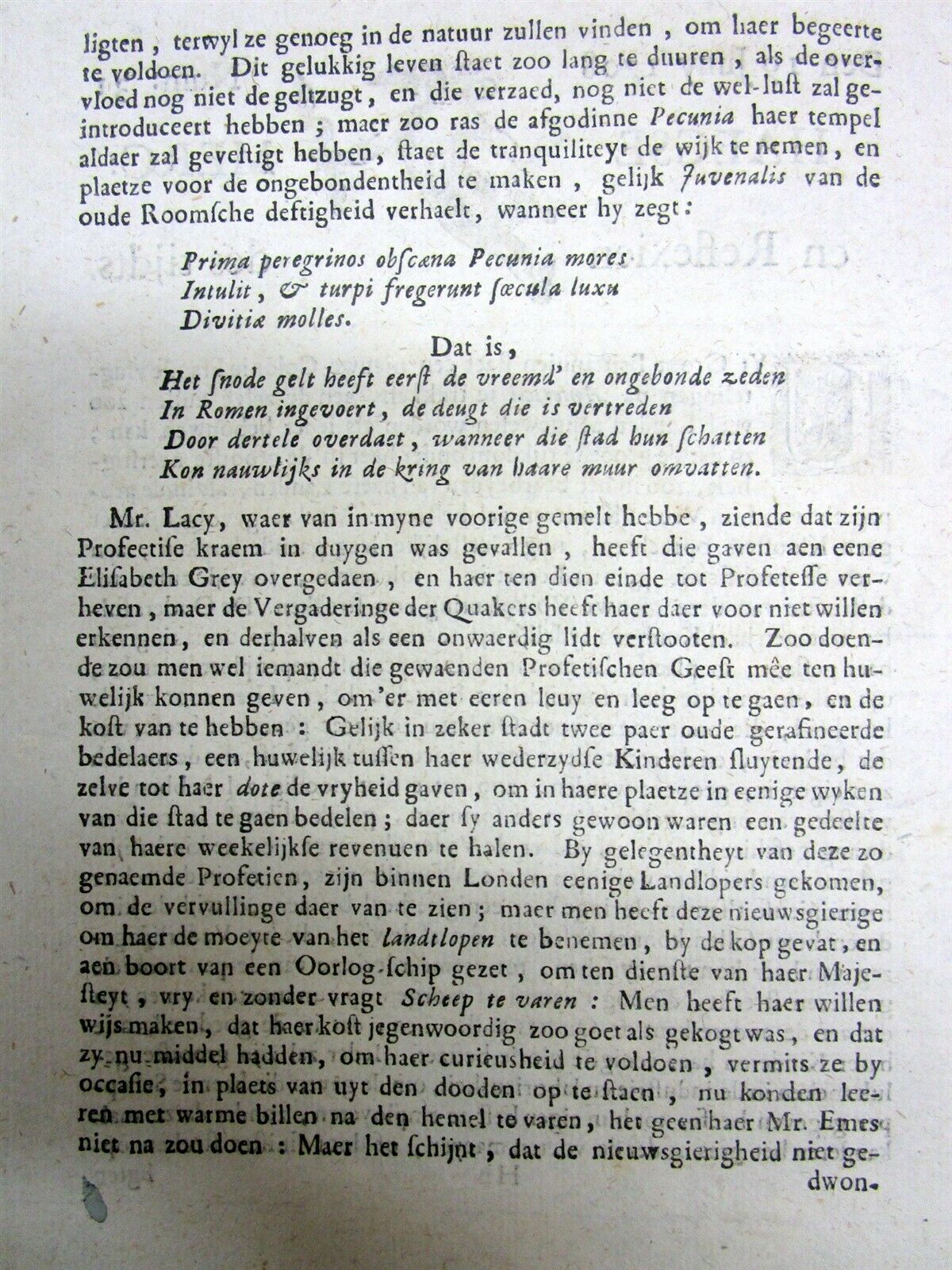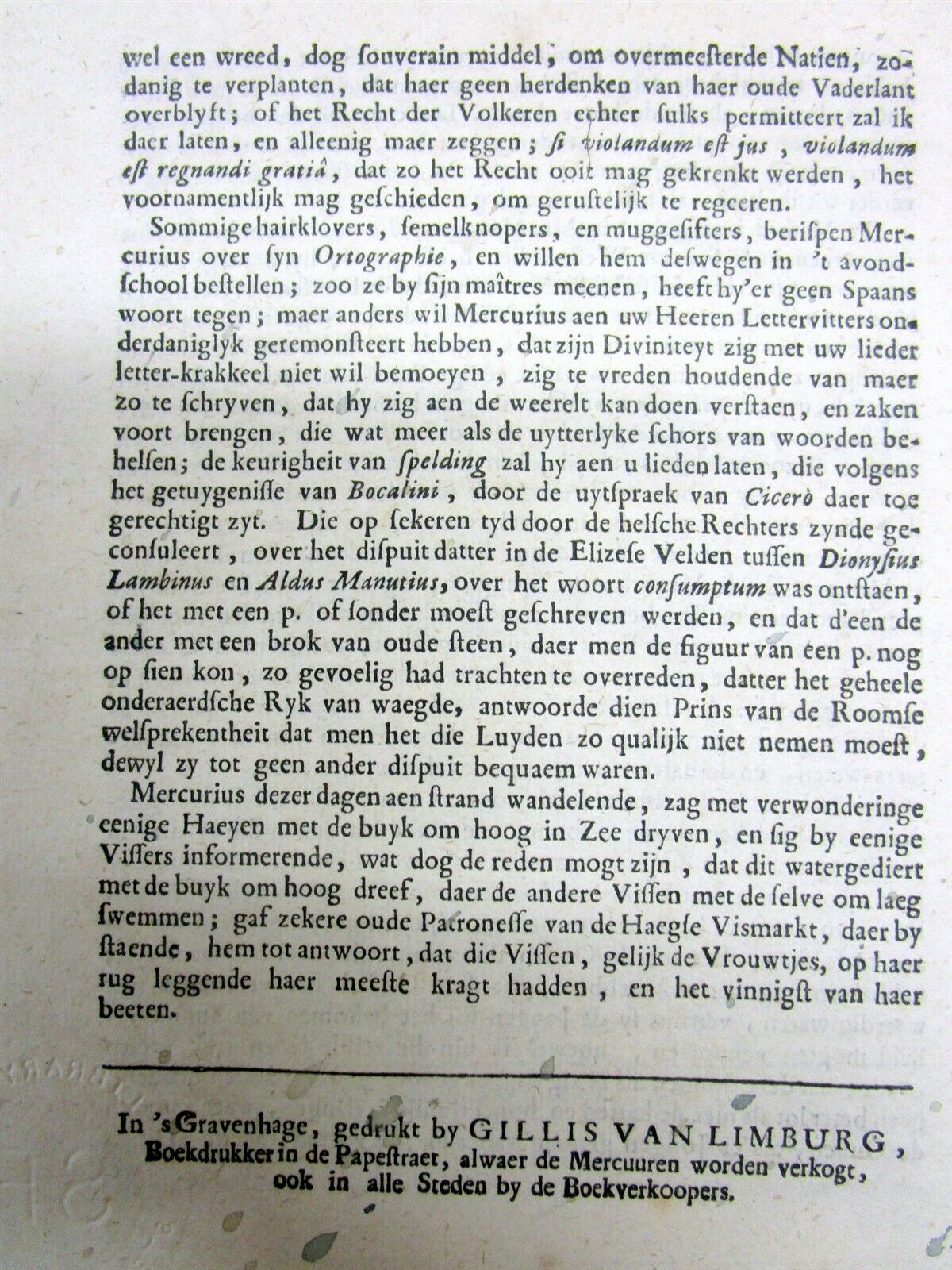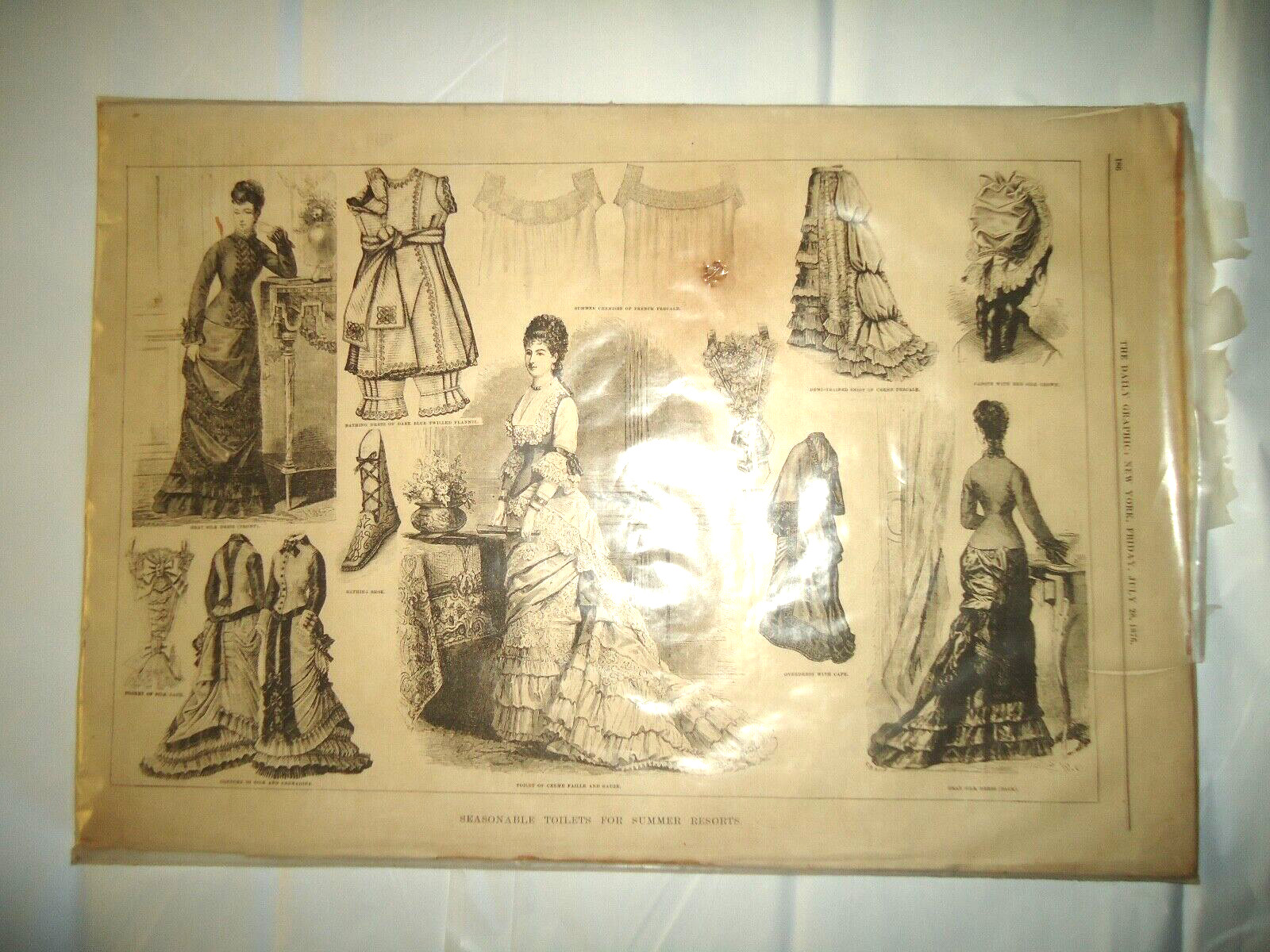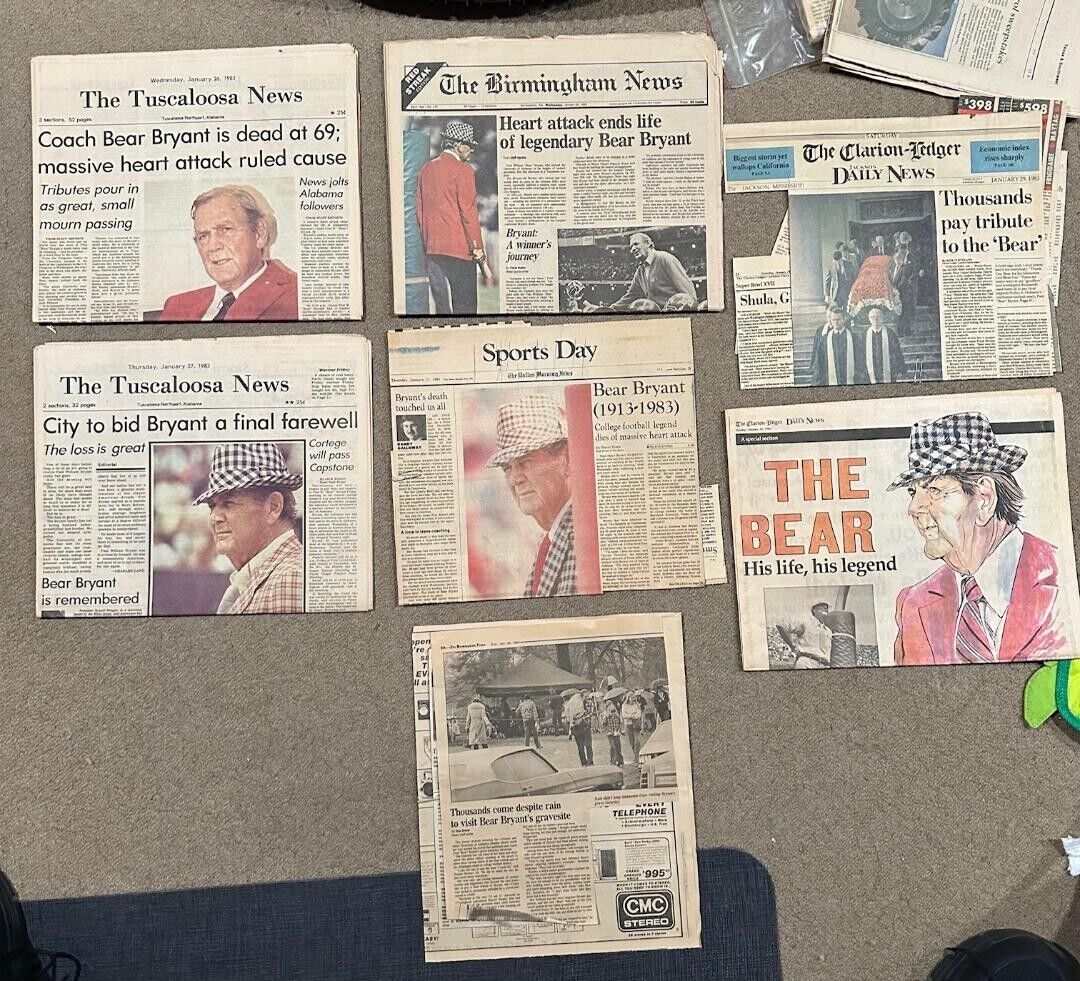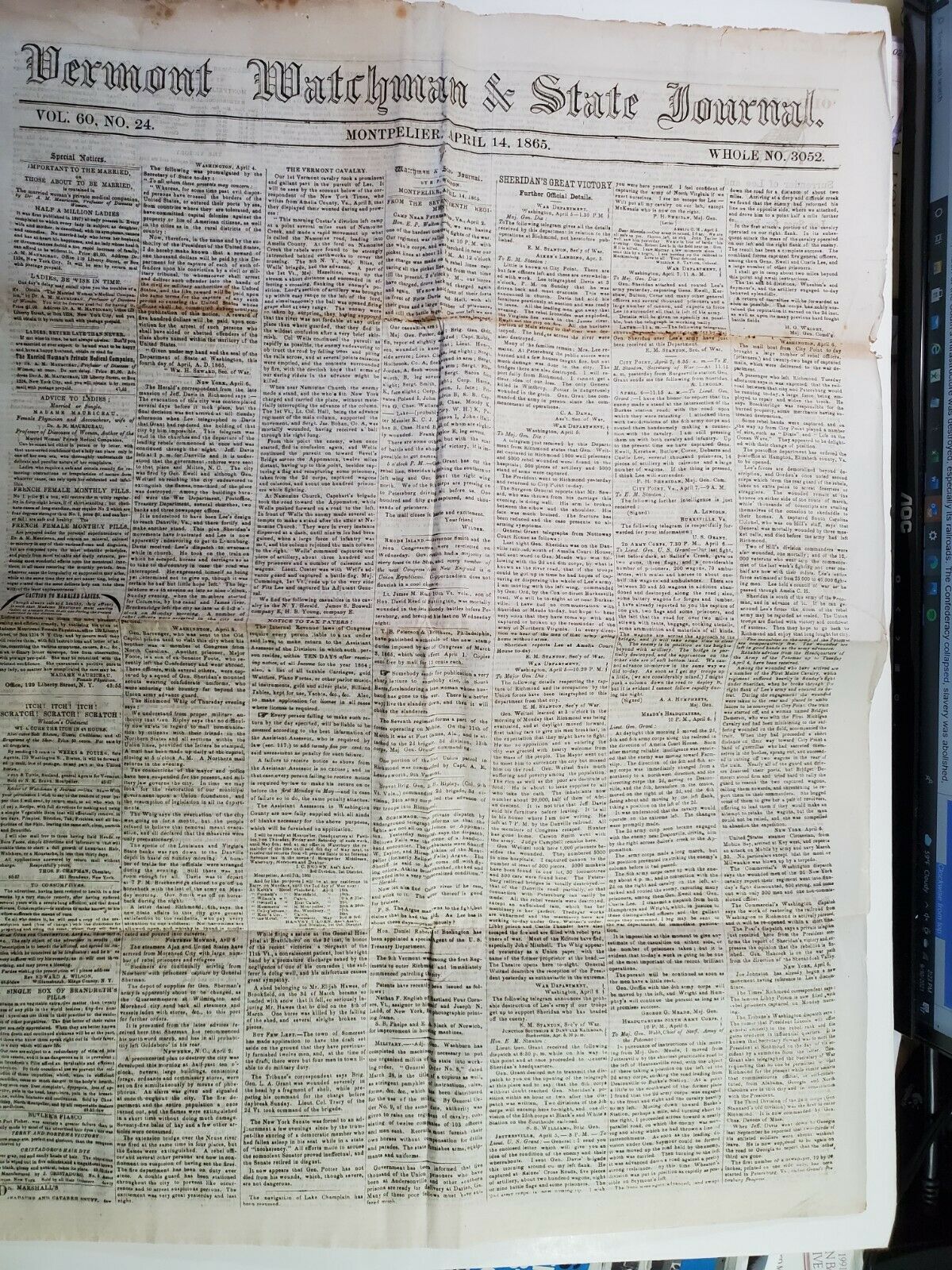-40%
Rare 1708 THE HAGUE Netherlands newspaper France sends colonists to America
$ 79.2
- Description
- Size Guide
Description
Rare 1708 THE HAGUE Netherlands newspaper France sends colonists to AmericaRare 1708 THE HAGUE Netherlands newspaper France sends colonists to the American Colonies
at the time of QUEEN ANNES WAR in the Americas
- inv # 4E-231
Please visit our
EBAY STORE
for THOUSANDS MORE HISTORICAL NEWSPAPERS for SALE or at auction
SEE PHOTO(s) - COMPLETE ORIGINAL 4-page NEWSPAPER (8" x 6"), the "
HAEGSE
MERC(ury): en Reflexien des tijdts" (The Hague in the Netherlands) dated June 19, 1708. This rare original newspaper contains news of the
French sending colonists to the Americas during QUEEN ANNE'S WAR in the Americas
.
Queen Anne's War (1702–1713) was the second in a series of French and Indian Wars fought in England's Thirteen American Colonies during the reign of Anne, Queen of Great Britain. In Europe, it is generally viewed as the American theater of the War of the Spanish Succession; in the Americas, it is more commonly viewed as a standalone conflict. It is also known as the Third Indian War or as the Second Intercolonial War in France.
When war broke out in Europe in 1701 following the death of King Charles II concerning who should succeed him to the Spanish throne, it was initially restricted to a few powers in Europe, but it widened in May 1702 when England declared war on Spain and France. Both the British and French wanted to keep their American colonies neutral, but they did not reach an agreement. But the American colonists had their own tensions which had been growing along the borders separating the French and English colonies, especially concerning boundaries and governing authority in the northern and southwestern frontiers of the English colonies, which stretched from the Province of Carolina in the south to the Province of Massachusetts Bay in the north, with additional colonial settlements or trading outposts on Newfoundland and at Hudson Bay.
The total population of the English colonies was about 250,000, with Virginia and New England dominating. The residents were concentrated along the coast, with small settlements inland, sometimes reaching as far as the Appalachian Mountains. Colonists knew little of the interior of the continent to the west of the Appalachians and south of the Great Lakes. This area was dominated by Indian tribes, although French and English traders had penetrated it. Spanish missionaries in La Florida had established a network of missions to convert the Indians to Roman Catholicism. The Spanish population was relatively small (about 1,500), and the Indian population to whom they ministered has been estimated at 20,000. French explorers had located the mouth of the Mississippi River, and they established a small colonial presence at Fort Maurepas near Biloxi, Mississippi, in 1699. From there, they began to build trade routes into the interior, establishing friendly relations with the Choctaw, a large tribe whose enemies included the British-allied Chickasaw. All of these populations had suffered to some degree from the introduction of infectious diseases such as smallpox by early explorers and traders.
The arrival of French colonists in the south threatened existing trade links that Carolina colonists had established into the interior, creating tension among all three powers. France and Spain, allies in this conflict, had been on opposite sides of the recently ended Nine Years' War. Conflicting territorial claims between Carolina and Florida south of the Savannah River were overlaid by animosity over religious divisions between the Roman Catholic colonists of New Spain and the Protestant colonists along the coast.
To the north, the conflict held a strong economic component in addition to territorial disputes. Newfoundland was the site of a British colony at St. John's and a French colony at Plaisance, with both sides also holding a number of smaller permanent settlements. The island also had many seasonal settlements used by fishermen from Europe. These colonists numbered fewer than 2,000 English and 1,000 French permanent settlers (and many more seasonal visitors) who competed with one another for the fisheries of the Grand Banks, which were also used by fishermen from Acadia (then encompassing all of Nova Scotia and New Brunswick) and Massachusetts.
The borders and boundaries remained uncertain between Acadia and New England despite battles along the border throughout King William's War. New France defined the border of Acadia as the Kennebec River in southern Maine. There were Catholic missions at Norridgewock and Penobscot and a French settlement in Penobscot Bay near Castine, Maine, which had all been bases for attacks on New England settlers migrating toward Acadia during King William's War. The frontier areas between the Saint Lawrence River and the primarily coastal settlements of Massachusetts and New York were still dominated by Indians, primarily Abenaki and Iroquois, and the Hudson River–Lake Champlain corridor had also been used for raiding expeditions in both directions in earlier conflicts. The threat of Indians had receded somewhat because of reductions in the population as a result of disease and the last war, but they still posed a potent threat to outlying settlements.
The Hudson Bay territories (also known as Prince Rupert's Land) were not significantly fought over in this war. They had been a scene of much dispute by competing French and English companies starting in the 1680s, but the 1697 Treaty of Ryswick left France in control of all but one outpost on the bay. The only incident of note was a French attack on the outpost of Fort Albany in 1709. The Hudson's Bay Company was unhappy that Ryswick had not returned its territories, and it successfully lobbied for their return in the negotiations that ended this war.
Excellent condition. This listing includes the complete entire original newspaper, NOT just a clipping or a page of it. STEPHEN A. GOLDMAN HISTORICAL NEWSPAPERS stands behind all of the items that we sell with a no questions asked, money back guarantee. Every item we sell is an original newspaper printed on the date indicated at the beginning of its description. U.S. buyers pay priority mail postage which includes waterproof plastic and a heavy cardboard flat to protect the purchased item from damage in the mail. Upon request by the buyer, we can ship by USPS Media Mail to reduce postage cost; however, please be aware that USPS Media Mail can be very slow in its time of transit to the buyer. International postage is quoted when we are informed as to where the package is to be sent. We do combine postage (to reduce postage costs) for multiple purchases sent in the same package.
We list thousands of rare newspapers with dates from 1570 through 2004 on Ebay each week. This is truly SIX CENTURIES OF HISTORY that YOU CAN OWN!
Stephen A. Goldman Historical Newspapers has been in the business of buying and selling historical newspapers for over 50 years. Dr. Goldman is a consultant to the Freedom Forum Newseum and a member of the American Antiquarian Society. You can buy with confidence from us, knowing that we stand behind all of our historical items with a 100% money back guarantee. Let our 50+ years of experience work for YOU ! We have hundreds of thousands of historical newspapers (and their very early precursors) for sale.
Stephen A. Goldman Historical Newspapers
has been in the business of buying and selling historical newspapers for over 50 years. We are located in the charming Maryland Eastern Shore town of OXFORD, Maryland.
Dr. Goldman is a consultant to the Freedom Forum Newseum and a member of the American Antiquarian Society. You can buy with confidence from us, knowing that we stand behind all of our historical items with a 100% money back guarantee. Let our 50+ years of experience work for YOU ! We have hundreds of thousands of historical newspapers (and their very early precursors) for sale.
We invite customer requests for historical newspapers that are not yet located in our extensive Ebay listing of items. With an inventory of nearly a million historical newspapers (and their early precursors) we are likely have just the one
YOU
are searching for.
WE ARE ALSO ACTIVE BUYERS OF HISTORICAL NEWSPAPERS, including large and small personal collections, bound volumes, significant individual issues, or deaccessions from libraries and historical societies. IF YOU WANT TO SELL, WE WANT TO BUY !!!
Powered by SixBit's eCommerce Solution



